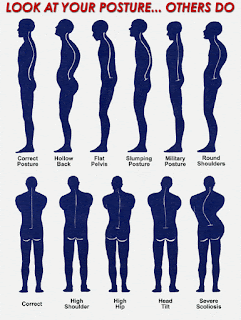Physiotherapy to compliment Orthotic (insoles) treatment
History
In the 1970's the California college of Paediatric medicine in San Francisco found a way to control dynamic motions of gait (walking) in stance.
What they invented was an Orthotic device or insole.
It became so popular that in the 1990's it became over utilised
Retailers started to dispense what should be a medical device!
So what are the issues with current practice?
There are many studies of biomechanics with an assumption that alteration of abnormal biomechanics will result in clinical benefit
Typically Physiotherapists assess the area where the pain is and the joints either side of it.
More rarely a Physio may have a look at the whole body including the feet.
Podiatrists are sometime guilty of the opposite in that they look at the feet predominantly less the lower limb and even less likely the pelvis and above.
Think about it!
There is a chance that a neck problem could be caused from a foot postural issue and also vice versa!
If someone had medial knee pain and overpronated in their feet then it would make sense to think the overpronation is causing the medial knee pain but 70% of the population overpronate and clearly 70% of the population don't have medial knee pain!
A Podiatrist may prescribe an antipronation device to treat the pain. But does it work? what else could it be? Is it even likely that one thing is causing it?
Most running-related injuries are overuse injuries and the causes of these injuries are often multifactorial.
So what else could be going on?
So what else could be going on?
Causes of shin splints: Training methods, Training surfaces, Muscle dysfunction/inflexibility, Shoe design & Biomechanics of running
Lower knee extension strength is significantly associated with higher risk for future patella femoral pain syndrome (Lankhorst 2012)
Another reason could be poor glut strength, endurance and control around the hip joint:
Patella femoral pain: Internal femoral rotation is associated with poor gluteus medius activation, affecting the stability of the pelvis
Another reason could be poor glut strength, endurance and control around the hip joint:
Patella femoral pain: Internal femoral rotation is associated with poor gluteus medius activation, affecting the stability of the pelvis
Facts and figures:
Prolonged pronation increases stress on pronation control mechanisms causing compensation that increases stress on other mechanisms
Excessive Supination causes impaired shock absorption = increased force spikes to damage tissues directly
Pronation of the foot: too much, too long or too late can cause an increase in the dynamic valgus vector force on the patellofemoral joint
Pronated position of the foot compromises joint pressure distribution and joint stability
Semi rigid orthoses reduced shin splints in military conscripts (Larsen et al 2002)
Clinically, comfort is the most important and relevant feature when prescribing foot orthoses (Mndermann et al 2003)
So what does this mean?
You need to come at the problem from multiple angle. Think about the following:
Footwear:
Age of footwear (shelf life of 1 year), usage (300 miles),
quality, correct for the individual?
Wearing pattern (not just underneath)
Too big? too small?
1.5 cm from longest toe to end
Width also!
Balance and Proprioception:
Single leg balance test:
1 minute: count the number of touch downs with eyes open
(above is a more advanced version standing on a stability cushion)
Functional movement:
Dynamic lunge - look for knee control and any foot drag etc.
Crucifix against wall – pelvic tilt
Crucifix against wall – pelvic tilt
Single leg squat
Hypermobility tests
Hip rotations
Bridging
Superman
Overhead squat
Single leg stability
Force reduction/production: Landing mechanics
Joint & Muscle assessments:
POSTURAL MUSCLE SHORTNESS TEST (PMST)
(Chaitow, 2001)
Leg length:
Significance?
3 mm Running injury risk Subotnick
5 mm Spinal compensation Friberg
6 mm Running injury risk Brody
7 mm No problem < 7 mm Corrigan, Maitland
9 mm Lumbar facet angle changes Giles
10 mm Low back pain Cyriax
15 mm Compensatory scoliosis Gibson
20 mm LE compensation Vogel
22 mm Significant scoliosis Papaloannu
40 mm Requires surgical correction Ingram
So as you can see there is plenty of debate of the amounts. Everyone is different so the truth is it depends!
Podiatry assessment
Physiotherapy assessment
Video Analysis of walking and running
Conditioning Exercises:
Core stability
Strengthening
Cardiovascular Endurance
Flexibility
Muscular endurance
Proprioception












Cool so not only do orthotics can help make wearing shoes more comfortable they also help other parts of your body at the same time!
ReplyDelete